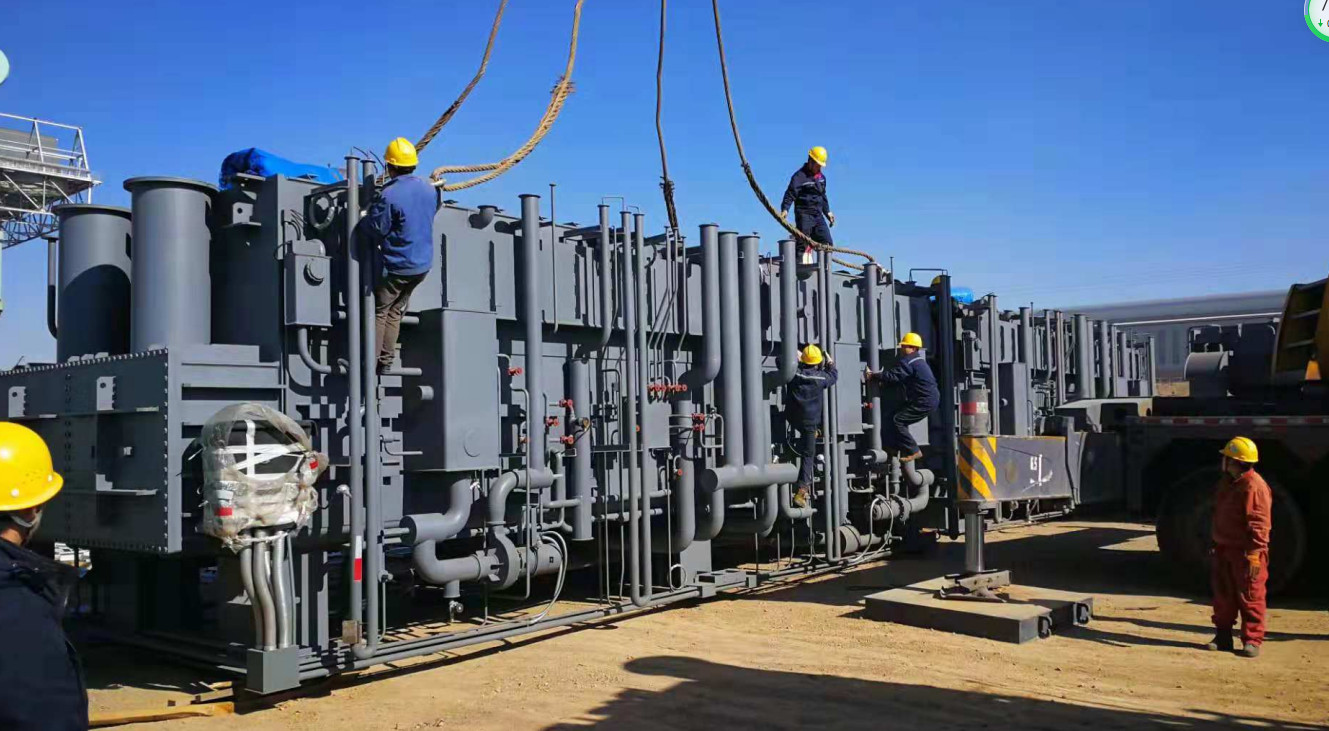Inner Mongolia New Hengfeng Power Station
2*350MW Thermal Power Station Project
Project location: Baotou, Inner Mongolia
Equipment selection: 2 unit 73.15MW Low Pressure LiBr absorption heat pump
Main function: City heating
General introduction
The New Hengfeng Extension Project, which includes two 350 MW co-generation units, is designed to address the heating demand of Qinghe District while simultaneously supporting the local power grid in Guyang District by optimizing coal use on-site. This initiative offers multiple benefits, including enhancing the value of local coal resources, improving fiscal revenue, reducing regional employment pressures, and accelerating the development of related industries. Moreover, it plays a crucial role in stabilizing both the regional economy and the local ethnic minority areas.
The co-generation units and peak-regulating boilers will supply heating to a total area of 18 million m² of urban residential spaces. Of this, the co-generation units will meet the heating needs for 11 million m², while the remaining capacity will be covered by the peak-regulating boiler houses. The heating system is designed with a heat supply index of 51.2W/m² and operates with a heating grid supply and return water temperature of 110/55°C, ensuring efficient and reliable heating for urban residents.

Technical Data
Heating capacity: 73.15MW/unit
Qty: 2 unit
DHW inlet:55°C
DHW outlet: 82°C
Low pressure temp./steam: 51°C/13kPa (A)
Driven steam pressure: 0.3MPa
COP: >1.75
Dimension: 11300*5440*9000 Operation weight: 288t/unit
Main features and innovations
The system has been designed with several advanced features to enhance performance and efficiency:
- Direct Low Pressure Steam Input: Low-pressure steam is directly supplied to the heat pump unit, ensuring efficient utilization of available steam without additional processing.
- Automatic Turbine Exhaust Pressure Control: The system automatically maintains the exhaust pressure of the turbine, optimizing operational stability and efficiency.
- Automatic Heating Temperature Control: The heating temperature is automatically regulated, ensuring consistent and optimal output to meet heating demands.
- Remote Monitoring: The system is equipped with remote monitoring capabilities, allowing operators to track performance, detect issues, and manage operations from a distance.
- Two-Stage Evaporator and Absorber: The heat pump incorporates a two-stage evaporator and absorber, enhancing heat transfer efficiency and improving the overall performance of the system.
- Two-Stage Generator and Condenser: A two-stage generator and condenser system is used to maximize heat recovery and minimize energy consumption, ensuring high efficiency in heat exchange.
- Steam Temperature and Pressure Reduction System: A dedicated system for reducing steam temperature and pressure ensures that the steam entering the heat pump is within the optimal range, maximizing efficiency.
- Steam and Condensate Water Recovery System: The system includes a steam and condensate water recovery unit, capturing waste steam and water to be reused, reducing water and energy consumption.
- Low Pressure Steam Condensate Recovery System: The unit also features its own low-pressure steam condensate recovery system, enabling the recovery of condensate water for reuse in the system, further reducing waste and operational costs.
These features work together to ensure efficient, stable, and environmentally friendly operation, with optimized energy usage and a focus on resource recovery.


Efficiency
Based on the calculated performance of the heat pump system, here is the detailed analysis of its economic and environmental benefits:
- Heat Pump COP (Coefficient of Performance): 1.75
- Heat Pump Capacity: 2 units, each with a capacity of 73 MW, for a total of 146 MW.
- Waste Heat Recovered: The system can recover 64.5 MW of waste heat from low-pressure steam.
Given the operation conditions:
- Heating Days: 160 days per year
- Operational Hours: 24 hours per day
The total waste heat recovery from the heat pump in the heating season is calculated as:
64.5MW×24hours/day×160days=930,240MWh/year
Converting MWh to GJ (since 1 MWh = 3.6 GJ):
930,240MWh/year×3.6GJ/MWh=3,348,864GJ/year
However, the specific recovery calculated is 890,463 GJ in the heating season, indicating a fraction of the theoretical maximum.
Economic Benefits:
- Cost per GJ of Heat: 10 CNY
- Total Economic Benefits:
890,463GJ/year×10CNY/GJ=17.81million CNY/year
Energy and Environmental Savings:
- Coal Saved: The system can save 34,000 tons of standard coal per year.
- Cooling Water Saved: 36.5 tons of low-pressure steam cooling water are saved annually.
- CO₂ Emissions Reduced: The system reduces carbon dioxide emissions by 87,500 tons per year, contributing significantly to environmental protection and sustainability.
This system demonstrates a strong economic return on investment while making significant strides in energy conservation and environmental protection.
Web: https://www.deepbluechiller.com/
E-Mail: yut@dlhope.com / young@dlhope.com
Mob: +86 15882434819/+86 15680009866
Post time: Mar-31-2023





